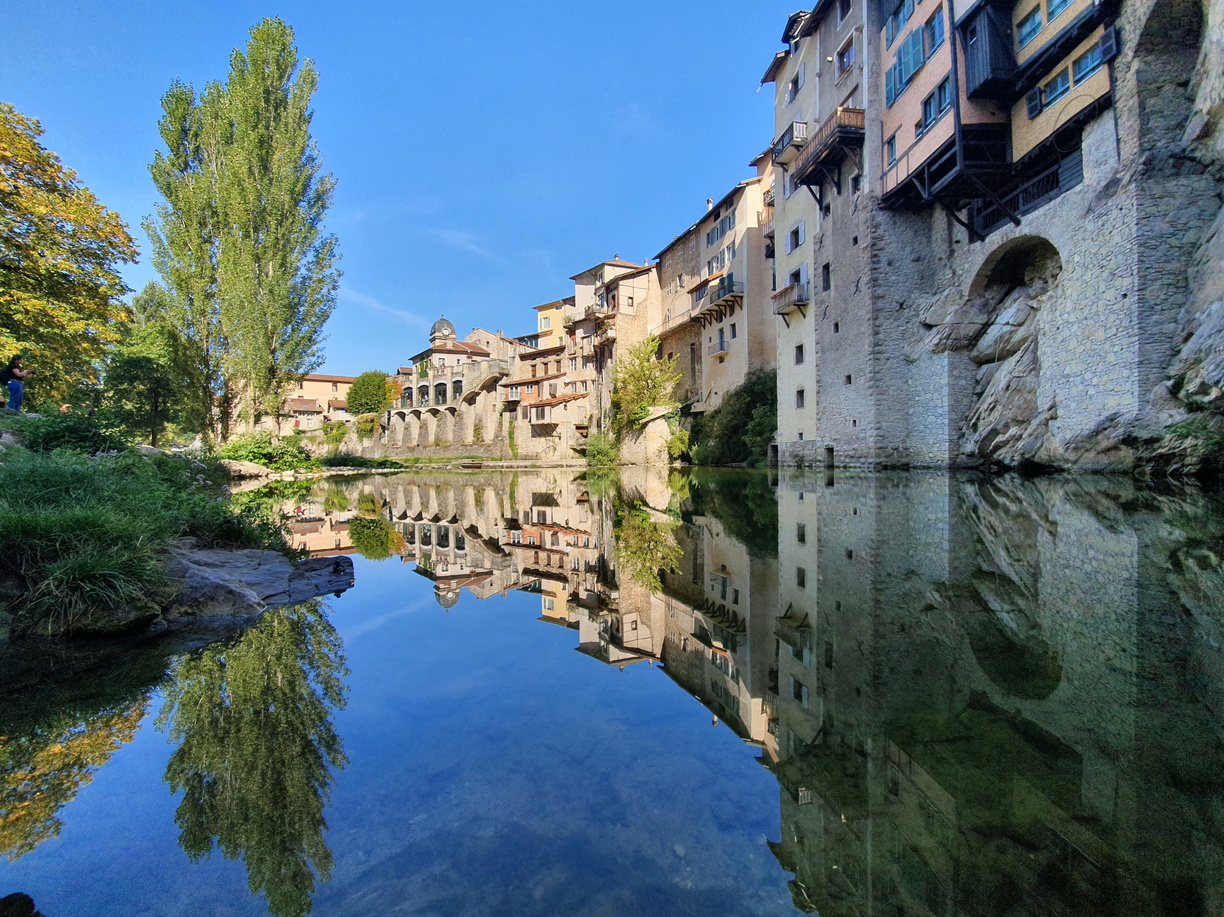![]() @adelinev38 by Inspiration Vercors
@adelinev38 by Inspiration Vercors![]() julienloicgabriel by Inspiration Vercors
julienloicgabriel by Inspiration Vercors![]() Itinera Magica by Inspiration Vercors
Itinera Magica by Inspiration Vercors![]() Pierre Jayet
Pierre Jayet![]() Pierre Jayet
Pierre Jayet
Presentation
Located at the start of the Gorges de la Bourne and on the road to the Grotte de Choranche, this medieval village is characterized by a unique architecture in the Dauphiné: houses suspended with colorful facades above the void.
The name of Pont-en-Royans derives directly from the bridge spanning the Bourne torrent. From the High Middle Ages, the bridge was erected between two rock piles, while next to it appeared inns and their stables, shops and therefore a real village whose priory was mentioned from the XNUMXth century. In the XNUMXth century, the Bérangers planted a small fort at the top of the rocky outcrop that dominates the strait, right bank, and gave themselves the motto "I have custody of the bridge". Trade, the protection of the castle and the ingenuity of the men who, from the XNUMXth century, built this perched village to promote the timber trade, made Pont prosper, which became the political and economic capital of Royans.
One of the first trades developed by the mountain dwellers was the transport and trade of wood. The workers cut wood in the forests of the Vercors and transported the tree trunks with donkeys and mules to Pont-en-Royans. No flotation was possible upstream of Pont-en-Royans. The trunks were assembled together to make rafts on which they climbed from Pont-en-Royans. The wood was transported to the South of France and more precisely to Beaucaire for the manufacture of boats that were once called galleys. Pont-en-Royans has always been a place of passage but also a strategic place for trade between products from the plain and the mountains. Undoubtedly installed shortly after the revolution in the old fortified house of the Sassenage, the mill located on the Place de la Halle turned, thanks to a fishing wheel, a factory to beat, card and spin the wool. The wheel was swept away during the 1851 flood. In 1858, the building became a woodturning center for an emigrant from the Jura: Claude Mary MAYET. Flourishing, it employed up to 48 people before moving to Sainte-Eulalie-en-Royans in 1902. The building, where production was stored, caught fire in 1912.
Bombed in 1944, the building was razed. Today, the media library and the contemporary art space which is aptly named La Halle are located in a room of the old mill.
The site, listed as a historical monument since 1944, had impressed Stendhal. Ramparts, alleys, terraced gardens, bridge, reinforce the cultural richness of the town. The pedestrian ascent to the old feudal tower of the "Three Castles" will allow you to benefit from a wide panorama on the territory of Royans.
The water museum testifies to the hydroelectric heritage of the village. Indeed, the building once housed a convent, which became a priory which passed to the Order of Saint Anthony in 1289. When the Order merged with the Order of Malta in 1780, it reverted to the latter. Subsequently, the place is transformed into a factory, a silk factory. Buildings expand during this period. The silk factory operated until 1918. The General Electricity Company moved into the same premises until the 1990s, then the water museum opened its doors in 2002. Today, an electricity company manufacturing sockets and switches is located not far from the museum and about forty employees work there, it is
of the Legrand company.
Rates / opening
Prices
Free access.
Opening
All year, every day.






